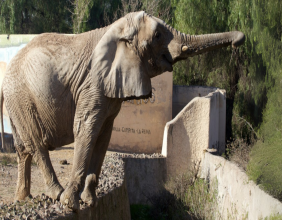Zephyr Energy plc (LSE:ZPHR), a Rocky Mountain-based oil and gas company focused on carbon-neutral operations, has announced a successful second phase production test at its flagship State 36-2R LNW-CC well in the Paradox Basin, Utah. The company is pleased to report that peak production rates during the test reached over 2,100 barrels of oil equivalent per day (boepd). This marks a major achievement, particularly given that the well was completed across only 130 feet of the reservoir interval.
The acidisation operation, which was crucial to this success, has proven to be a key driver of the well's performance. By removing remaining near-wellbore formation damage, the operation significantly enhanced reservoir permeability, leading to high reservoir deliverability. This is a first for the Paradox Basin, where acidisation had not previously been used, and it holds promising implications for future development in the region. Zephyr's ability to achieve strong production without the need for costly hydraulic stimulation, commonly used in other U.S. resource plays, could reduce operational risks and expenses.
Elevated Liquid Yields and Economic Upside
A notable aspect of the test was the variable but increasing liquid yields, which surpassed those observed at the company’s State 16-2 well in the northern part of the Paradox project. At the test’s peak production rates, condensate and light volatile oil accounted for 510 boepd. These increasing liquid yields could enhance the project’s overall economics by increasing recoverable volumes across the Paradox acreage. Zephyr is conducting a detailed fluid analysis to better understand the composition of the well’s hydrocarbons.
In another positive development, the well continues to show almost zero water production, which could significantly lower operational costs by reducing the need for water disposal. These factors together position the well for strong economic performance.
Potential for Broader Development
Zephyr is already engaging with U.S.-based industry partners to explore opportunities for expanding the development of the Paradox project. With the success of this second phase test, the company believes that there is potential to accelerate additional appraisal and field-wide development.
The acidisation operation not only improved well performance but may have enhanced the overall reservoir quality. By dissolving calcite and dolomite minerals in the reservoir, the process created increased porosity and permeability. This suggests that acidisation could be a cost-effective alternative to hydraulic stimulation for future well completions. The company is optimistic that applying this technique across a longer lateral section could further reduce costs and risks associated with the project’s development.
Next Steps and Future Outlook
Following the successful test, Zephyr has temporarily shut in the well to assess the new data. A key decision will be whether to start production immediately or to defer it temporarily to allow for a potential lateral extension of up to 10,000 feet. Extending the wellbore could improve overall hydrocarbon recovery and take advantage of the acidisation’s positive impact on deliverability.
Zephyr’s board is now actively pursuing a partnership or financial backing to accelerate the development of the Paradox project. Whether through a farm-in agreement, joint venture, or asset-level funding, the company is confident that the data collected over the past four years—including seismic studies, core samples, and the recent test results—will attract interested parties.
_11_08_2022_10_03_39_477651.jpg)



